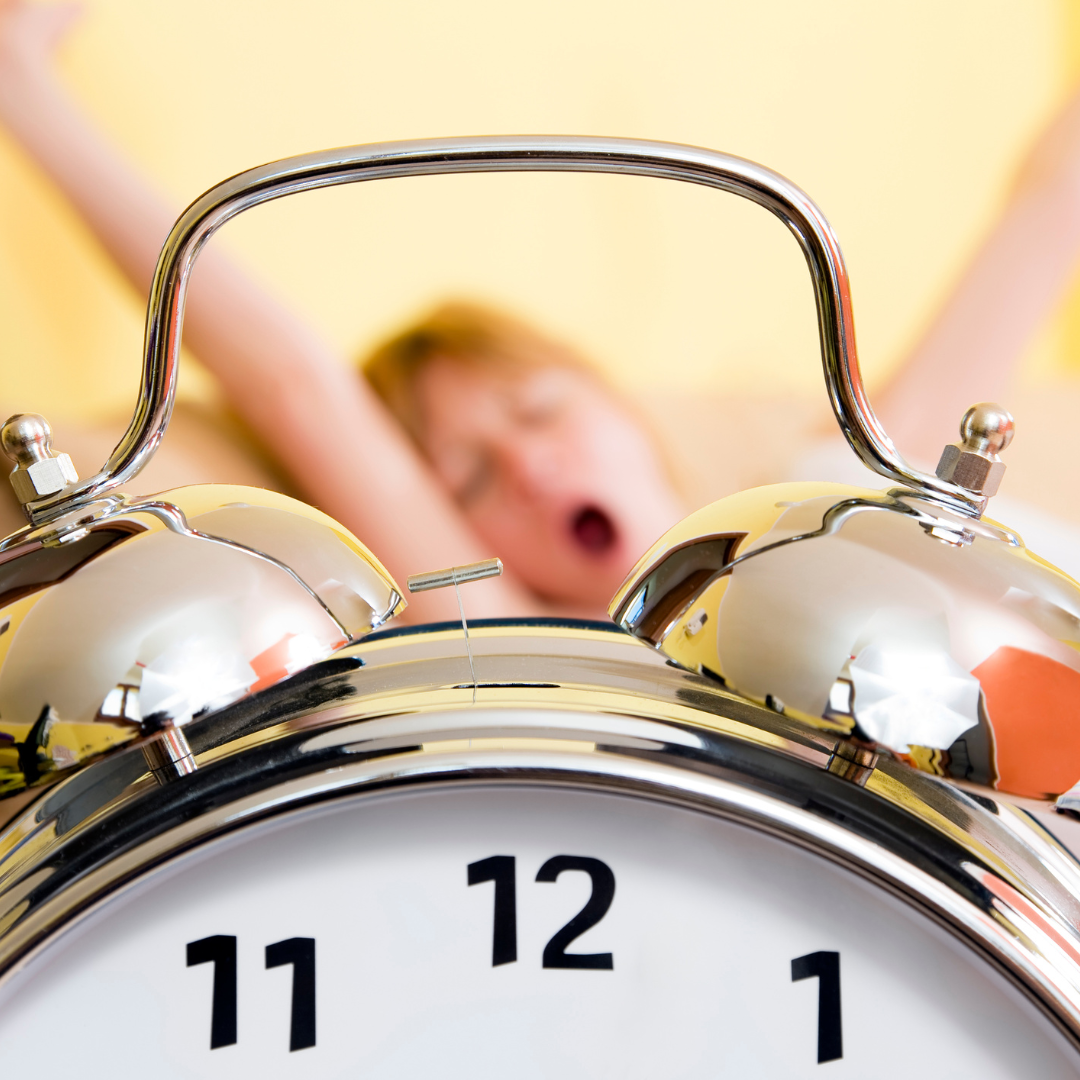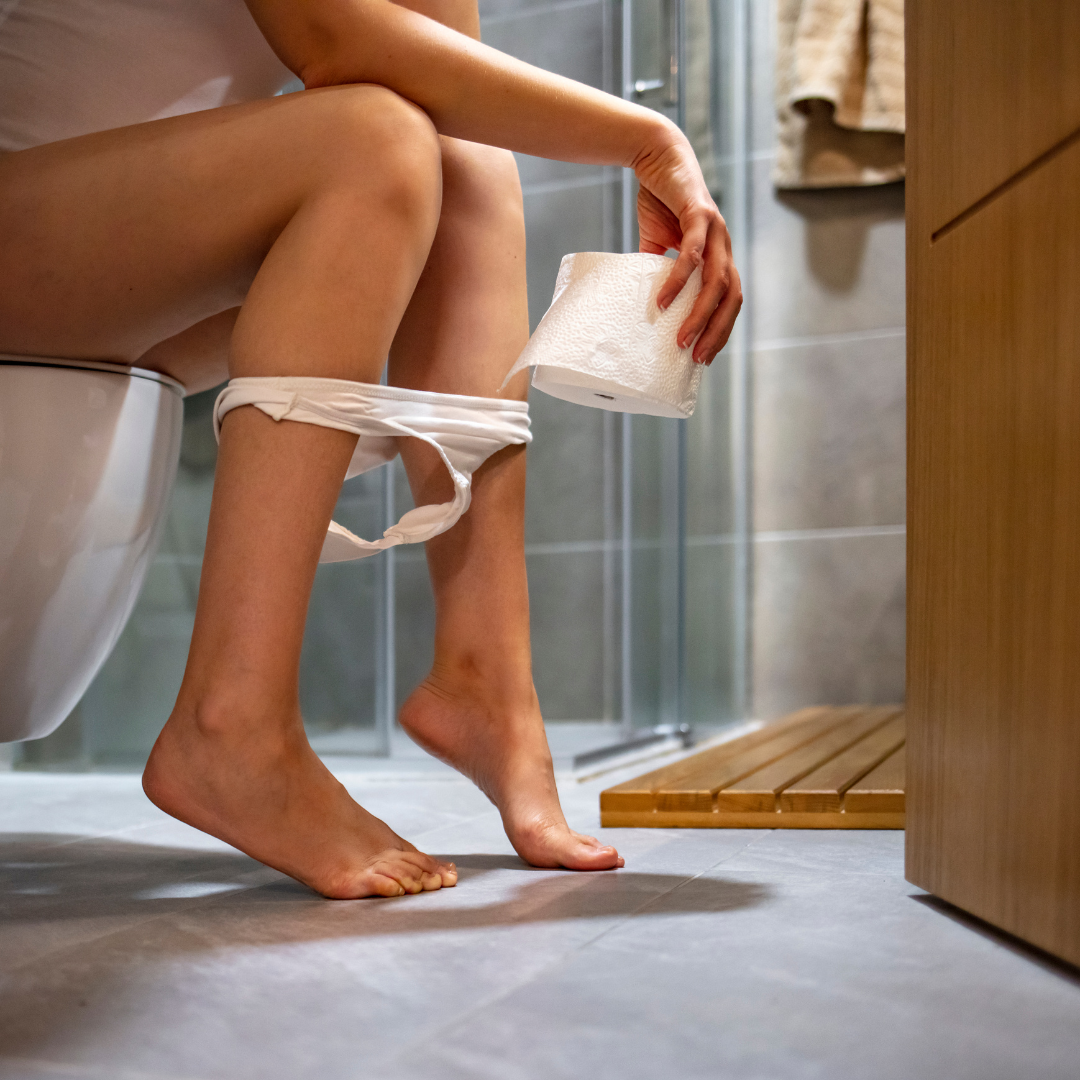Retraining Your Bowels: The Step Most People Miss
If you’ve been struggling with inconsistent bathroom habits, straining on the toilet for so long it feels like you could pass out, or incomplete emptying… you’ve probably already tried eating more fiber, drinking water, or laxatives. And when that didn’t work, maybe you tried changing your diet by cutting out foods or started trying random supplements.
But there’s one thing that most people with chronic constipation don’t realize, and if you miss this piece of the puzzle, it can mean the difference between epic morning bowel movements and unpredictable poops.
You see, most people don’t realize the body runs on a clock. Your brain is the main operating system of this clock, and it has different “alarms” that go off throughout the day, telling you when it’s time to wake up, when it’s time to feel sleepy, when it’s time to eat, and even when it’s time to poop. But if your internal “alarm clock” for bowel movements isn’t set properly, your body may not get the signal to go. This is why some people wake up and poop like clockwork, while others are left feeling stuck, bloated, and sluggish.
Why Your “Poop Alarm Clock” Isn’t Working
This internal body clock is called your circadian rhythm. It’s a 24-hour cycle that influences everything from sleep to hunger cues to digestion. According to this natural rhythm, your colon is most active in the morning, which is why many people have the urge to go just after they wake up.
When constipation becomes chronic or recurrent, this can throw off this rhythm, and you may have a weakened urge to go, or none at all. It’s like an alarm clock that isn’t loud enough to wake you up, or one that doesn’t go off. Instead of your colon naturally pushing things along, waste sits in your intestines longer than it should, leading to harder stools, more straining, and incomplete bowel movements.
What Throws Off Your Rhythm
There are 3 common mistakes that can lead to circadian rhythm imbalances that throw off your natural urge to poop:
Rushed Mornings Suppress the Urge – Your body needs to be in a relaxed state to have a bowel movement. If you are in the habit of hitting snooze multiple times and then rush to get out the door in 30 minutes or less, your nervous system prioritizes getting out the door over pooping. This habit suppresses the natural urge to go. Over time, the signals get weaker and weaker.
Erratic Morning Habits Disrupt Your Gut’s Routine – Waking up at different times, eating breakfast at different times (or skipping it entirely), or working irregular shifts confuses your body's internal clock. Your gut thrives on consistency, and unpredictable schedules can make it harder for your colon to establish a natural rhythm.
Ignoring the Urge Trains Your Gut to Stay Constipated – When you suppress the urge to go—whether it’s because you’re in a rush, it’s inconvenient timing, or you don’t want to use a public restroom—you teach your body to ignore its natural signals. Over time, this weakens the reflex, making it even harder for your body to initiate a bowel movement when it needs to.
The good news is: even if your natural rhythms are off, you can retrain your body’s clock and get those signals back on track. This is called bowel retraining.
Bowel Retraining: The Solution to Constipation That Actually Works
Bowel retraining involves trying to go to the bathroom at the same time every day in an attempt to help train your body to have regular bowel movements. It’s important to remember that bowel retraining takes time, but most people are able to establish a regular routine of bowel movements within a few weeks of consistent practice.
It’s a bit like house-training a puppy. You wouldn’t expect a new puppy to just know where to go—you teach it by bringing it outside at the same times every day. Your gut needs the same consistency!
Practice your bowel retraining in the morning, ideally within the first hour of waking up, because this is when the colon is most active (Source). Studies show that following a structured routine—particularly focusing on morning motility—can significantly improve stool frequency and reduce constipation-related discomfort.
Here’s how to do it:
Step 1: Set the Intention
Before your body can follow through, your brain needs a cue. The gut-brain connection is real—your nervous system plays a huge role in motility. Start priming your body by simply thinking about pooping. Imagine the process, remind yourself that it’s time, and give your brain a clear instruction: “It’s time to poop soon!” It might sound weird, but your body listens more than you think.
Step 2: Set a Consistent Bathroom Time
Once you’ve set your intention, pick a time each morning to sit on the toilet, even if you don’t feel the urge. Think of this like bringing a puppy outside at the same time each day—even if nothing happens at first, eventually, the habit forms. The best time is 30 minutes to 2 hours after waking. Try to time it about 20 to 30 minutes after eating breakfast, which can help stimulate a bowel movement.
Step 3: Tune Into Your Body’s Signals
Practice listening for cues that indicate a need to go. Pay attention to gurgling, or feelings of fullness or pressure in the abdomen or rectum. When you feel the urge, go use the restroom.
Step 4: Create a Relaxed Environment
The gut and brain are connected, and stress or tension in the body can contribute to difficulties going to the bathroom. To create a more relaxed experience (rather than stressing about whether or not you’ll go), practice deep belly breathing, on or off the toilet. The in and out movement of your abdomen as you breathe acts as a gentle massage that can help move things along.
(If you’re not sure how to practice deep belly breathing, click here for a short video.)
You may also wish to try a gentle abdominal massage, which can relieve tension in the muscles surrounding the colon and encourage forward movement of trapped stool. (See my post on abdominal massage.)
Step 5: Use Proper Toilet Positioning
There is a tiny muscle called the puborectalis muscle that acts like a sling at the end of your rectum. When you sit or stand, this muscle contracts and prevents you from having an accident, much like kinking a garden hose to stop the flow of water. This means when you sit on a traditional North American toilet, your colon is kinked, making it more difficult for poop to pass through.
The solution is to get into a squat position where your knees are higher than your hips with your thighs in close to your body. You can do this by using a small foot stool at the base of your toilet. This allows for easier elimination and helps prevent straining.
Step 6: Keep It Short
Don’t sit on the toilet for more than 5 minutes. Sitting for longer can put unnecessary strain on pelvic floor muscles. Over time, excessive straining can weaken these muscles, leading to more difficulty with bowel movements. If nothing happens after 5 minutes, try again in 20 minutes, but don’t force it. Results will come with consistent practice.
Optional: Use a Daily Motility Agent at Bedtime
A motility agent, like magnesium citrate or Restoralax, can help stimulate your gut at the same time every morning, like setting an alarm clock for your bowels. Taking it at bedtime allows it to work on your gut overnight to help prime your gut to go each morning. This is meant as a tool to use in combination with the steps above to facilitate faster results. Once you have developed a consistent pattern of regular bowel movements, you can work with gradually removing the daily motility agent.
Want to learn more about how to get your gut moving with the right habits and supplements? Grab Motility Made Simple— a guide that gives you everything you need to create a gut-moving strategy tailored to your needs so you can poop every day and finally feel GOOD in your body.
The most important step of bowel retraining? Do this daily. Your gut needs repeated signals to get the message that morning is the time to go. Just like a puppy eventually learns when and where to do its business, your colon will catch on, too.










